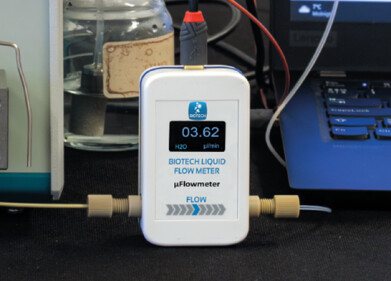HPLC, UHPLC
Mycotoxins in Pet Food - Chromatography Investigates
Aug 24 2019
We love our pets. Large and small, fluffy or wet. It doesn’t matter, everyone has a favourite. And because of the number of pets we have and they have to eat, the pet food industry is a huge business with some massive companies involved, Mars Incorporated, Nestle and Colgate-Palmolive are just a few of the household names involved in the supply of pet food.
Unfortunately, like the food we eat, pet food is not always perfect. One of the problems that can affect both human and pet foods are mycotoxins. A recent paper published in the journal Toxins - Target Analysis and Retrospective Screening of Multiple Mycotoxins in Pet Food Using UHPLC-Q-Orbitrap HRMS - reports on the development of a new chromatography method for the detection, quantification and reliable identification of mycotoxins in pet food.
Unavoidable contamination
Mycotoxins are metabolites made by fungi. They cause a problem in foods because fungi produce them in plants we eat, either before or after harvest. It is estimated that a significant amount of agricultural production worldwide could be contaminated by at least one mycotoxin. And that means that mycotoxins and fungi are topics of interest to scientists as they ‘are unavoidable and unpredictable contaminants in crops.’
The researchers behind the paper referenced above, say that the mycotoxins with the biggest health impact and economically are alfatoxins, ochratoxin A, zearalenone, fumonisins and trichothecenes. There are several factors that affect mycotoxin production and thus feed contamination. Temperature, humidity and damaged crops all play a role in mycotoxin contamination. Unfortunately, these factors also affect the crop when it is in storage after harvest, so feed producers have to ensure they have good storage conditions.
Chromatography measures the mycotoxins
Analytical methods have been developed in recent years for the detection of mycotoxins. And recent developments in chromatographic instruments and techniques in recent years have meant better peak efficiency and quicker run times - improvements discussed in the article, Increasing HPLC / UHPLC Sample Throughput: Doing More in Less Time.
The method that the team developed utilised ultrahigh-performance liquid chromatography coupled to high-resolution mass-spectrometry (UHPLC-Q-Orbitrap HRMS). They applied the method to eighty-nine pet food samples and found twenty-six mycotoxins - but at concentration below the maximum permissible limits.
The researchers conclude that:
The established method was rapid and efficient, and capable of covering more analytes compared to the previous methods for the detection and quantitation of mycotoxins in pet food products.
Digital Edition
Chromatography Today - Buyers' Guide 2022
October 2023
In This Edition Modern & Practical Applications - Accelerating ADC Development with Mass Spectrometry - Implementing High-Resolution Ion Mobility into Peptide Mapping Workflows Chromatogr...
View all digital editions
Events
ACS National Meeting - Fall 2024
Aug 18 2024 Denver, CO, USA
Sep 04 2024 Chiba, Tokyo, Japan
Sep 04 2024 University of Warwick, Coventry, UK
Sep 10 2024 Rockville, MD, USA
Plastics Recycling World Expo Europe
Sep 11 2024 Brussels, Belgium














